The Gift of South Dakota
Subscriptions to South Dakota Magazine make great gifts!
Subscribe today — 1 year (6 issues) is just $29!
Big Shots
Oct 16, 2013
South Dakota’s ring-necked pheasant population has lured out-of-state hunters for years. You may even know the names of some of them — Clark Gable, Carole Lombard, Kirby Puckett, and Dick Cheney have all taken aim here. These celebrity hunting trips were short, but the South Dakotans who hosted and guided them will never forget the experience.
E. Boyen Beckel remembered Ward Bond, the star of 1950s television show Wagon Train, visiting Madison in the 1940s. “I had the privilege of guiding Bond on one of his trips, and despite my young age, partied with Bond and his group at the hotel by the depot on Egan Avenue. Bond knew how to hunt, but even more, how to party.”
We checked the South Dakota Magazine archives and found the following tales of fame and pheasants.
Oh Sure — And I’m Babe Ruth
The thirties were a decade of dust, blizzards and poverty. But there was relief from grim times at the Center Store, located in northern McCook County, especially during pheasant season. Locals and out-of-staters gathered for gas, soda, ice cream and shotgun shells.
Everybody knew Bob Feller, who pitched for the Cleveland Indians. He hunted every fall between Center and Howard with his uncle, who delivered gas and oil to the store. But nobody recognized the stocky, middle-aged hunter who strolled in one day.
Kenny Knutson was there when the stranger appeared. He’d stopped on his way home from a baseball game in Salem, still wearing his uniform. “I see you’re a ball player,” the visitor said. “I used to play a little ball myself.”
“Yeah, when?” Kenny asked, looking at the old hunter with doubtful eyes.
“It was a few years back. Maybe you’ve heard of me. I’m Ty Cobb.”
“Oh, sure,” Kenny replied, “and I’m Babe Ruth.”
Cobb, who had retired in 1928 after 24 seasons with the Detroit Tigers and the Philadelphia Athletics, and who in 1936 came in first in the first ballot for the National Baseball Hall of Fame, didn’t say another word. He just pulled out his hunting license and presented it to the gape-mouthed Kenny.
Hemingway’s Lake County Hunt
For author Ernest Hemingway, hunting was a celebration — of life and death and his own manhood. But he didn’t want to let everyone in on the party when he came to the Girton Lodge near Wentworth to hunt pheasants in 1936.
Lodge owner Bill Girton and Ole Hagen, the Lake County game warden, had hoped to promote hunting in Lake County by inviting celebrities to visit during pheasant season. Hemingway accepted, “but the plan to use his visit as a tourism promotion fell flat,” said Eugene W. Larsen, Sr., author of Hemingway in South Dakota. “Hemingway insisted on complete privacy, with absolutely no press coverage.” The Wentworth residents Hemingway met complied with his wishes. “It was a real hush-hush situation at the time,” recalled Helen Pringle, the widow of Warden Hagen.
A few locals got to know the famous author on his ten-day visit. Eugene Larson was nine when he and his father, farmer and Girton Lodge guide Alfred Peter Larson, met Hemingway’s entourage at the Wentworth depot. Hemingway’s baggage included a box of bear meat that he promised to share with the party, though no one really appreciated the gesture. He loved it; the rest thought it was stringy and greasy. Hemingway also brought along a supply of Havana cigars, which he handed to Larsen with instructions to take care of them. “A black man put the luggage into our car, and Hemingway told Dad the man was his chauffeur,” said Larsen. “I didn’t know what that meant, but I found out the man intended to drive our car.”
Hemingway’s personal chef was also present, but he wasn’t ready to cook for such a large party, so Larsen’s mother was pressed into service for the first evening’s meal. With 13 children of her own, Mary Larsen was used a crowd around the table. She provided fried chicken and apple pie, and Hemingway provided the entertainment: he regaled his fellow diners with the tale of how he killed two grizzly bears before coming to South Dakota.
“Hemingway was always the center of attention,” remembered Gene’s older brother, Carl. “He loved it.”
The hunting was good in 1936 — an estimated 1.75 million ring-necked pheasants were taken that year. Lake County was abundantly favored with birds, with the Girton property’s drainage ditch being an especially promising hunting spot. This ditch and the adjoining farm lands were reserved for Hemingway’s group during his stay, though not everyone got the message. “One day the lodge hunters, including my father, were stalking a corn field,” says Gene Larsen. “Unbeknownst to them, a group of hunters was trespassing the field, walking crosswise to them. One of these illegal hunters heard rustling and shot toward the Hemingway group. Pellets came flying through the air! My dad had his gun up and at least a dozen pellets hit his gun and stuck in the wooden stock. Some of the shot hit Hemingway’s hunting vest. He let out a string of expletives. After hearing the screaming and swearing, the unseen violators quickly disappeared. I still have Dad’s gun and the pellet marks are quite visible.”
Hemingway’s trip looked like a vacation, but looks can be deceiving. “He said he had just ‘put his Morgan novel to bed’ in Wyoming, and that he’d handwritten 50,000 words…working like a bastard,” said Larsen. (The novel was later published as To Have and To Have Not.) Even though he wasn’t busy with any particular project in South Dakota, Hemingway never stopped accumulating the images and ideas that were his stock in trade. He took an interest in every detail of the prairie environment, “land contour, flowers, plants…things most people take for granted,” said Larsen. After evening meals he would sit in a corner and scribble notes on this he wanted to remember.”
But all vacations must end, and Hemingway’s prairie idyll was no exception. One evening the Larsen boys came home from school, and Hemingway was gone. He left Alfred Larsen $19, a small fortune in those days, and a hunting jacket that became a treasured family keepsake.
Editor’s Note: These stories are revised from the July/August 2003 and Sept/Oct 2006 issues of South Dakota Magazine. To order a copy or to subscribe, call 800-456-5117.



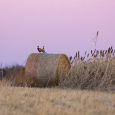
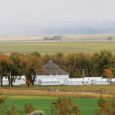
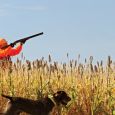
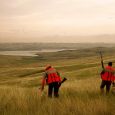
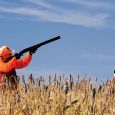
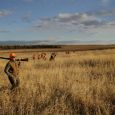


Comments
Kenny is gone now, and so is the Center Store. But it's good to be reminded of both again.